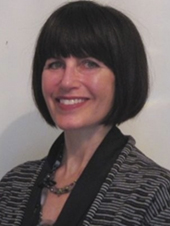Science and technology industry needs a makeover to make it more inclusive for women

From left to right: Angeline Ico, sales excellence leader at Microsoft; Rebecca Bailey, CEO at Women in Communications and Technology; Denise Pothier, chief operating officer at the Canadian Council of Aboriginal Business; and Kelly Lyons, a professor in the Faculty of Information at the University of Toronto and interim director of the Schwartz Reisman Institute for Technology and Society, spoke at an online event on Feb. 15, 2024 about women leaders in science, technology, engineering and math.
Kelly Lyons, a professor in the Faculty of Information at the University of Toronto and interim director of the Schwartz Reisman Institute for Technology and Society, recalls that when she graduated in 1985, her computing class was almost 40% women. “It was quite a high number at the time. But then over the years, I found I felt less and less part of the crowd, first in the workforce and then as a student in my doctoral work. So, I realized that you must find people that support you, that you can talk to. It's all about the people, not the programming anymore,” she said.
Lyons was speaking at a virtual event hosted by the Diversity Institute and Women of Influence (external link) , Inclusive Leadership: Women Breaking Glass Ceilings in STEM (science, technology, engineering and math). Sharon Broughton, senior research associate at the Diversity Institute, set the context for the discussion with research from the Diversity Institute and Future Skills Centre (external link) , including the recently completed seven-year project, Bridging the Technology Skills Gap, which was funded by the government of Ontario. She noted that, shockingly, there are fewer women in computer science and only marginally more in engineering than in 1991, when women represented 20% of those working in STEM occupations. Thirty years later, women make up just under 24% of the STEM workforce. She said that women who work in STEM often leave because of inflexible and toxic environments; when an intersectional lens is added, it reveals that Indigenous Peoples and Black people are significantly underrepresented.
Denise Pothier, an engineer and chief operating officer at the Canadian Council of Aboriginal Business, agreed, citing challenges she faced. “A number of barriers existed even before I entered engineering in the education system, let alone the workforce,” Pothier said. “My schooling was all in French until grade 10, after which I had to switch to English because the advanced science and math courses were only offered in English. Then when I got to university, I quickly realized that my advanced calculus course was not as advanced as the calculus that was offered in urban centres. I had to move away from home to attend university, which meant the financial burden of loans for the next 10 years,” she said.
With the rapid acceleration of digitization there are actually more digital jobs outside of the information and communications technology sector than within it.
Pothier said she appreciates that her chemistry teacher steered her toward engineering by looking past all the biases that existed, putting her on the path to success. “That is simply how somebody from rural Nova Scotia got to go into engineering.”
Getting into STEM is the first step, but sustaining oneself and advancing to an executive position is a whole new battle. Rebecca Bailey, CEO at Women in Communications and Technology, who partnered on the research with the Diversity Institute, noted the “broken rungs” syndrome, where women’s careers in STEM suffer a significant setback at a crucial juncture—the first promotion. “Men are more likely to get that first promotion than women are,” Bailey said. “And then that starts to create a divergent trajectory between men and women—as the seniority levels increase, we see fewer and fewer women represented in those cohorts.” Bailey attributes this to the traditional ways in which society is structured: men were expected to be breadwinners, women were to stay home and take on caregiving duties.
Diversity Institute research shows women comprise only 26% of boards and 21% of executive teams at TSX-listed firms, and many such boards still have no women. Further, when looked at from an intersectional lens, Black women had the lowest rates of advancement among all groups examined.
Broughton cited other research conducted by the Diversity Institute that shows how definitions of expertise in STEM potentially limit engagement by women in the industry and affect their ability to innovate. She said that with the rapid acceleration of digitization there are actually more digital jobs outside of the information and communications technology sector than within it and that the demand is increasingly for “hybrid” roles—people who can match technology to organizational needs. She added that people who understand human behaviour, markets, organizations, regulatory and policy environments are crucial to the process of innovation and these are fields where women are better represented.
Thinking beyond post-secondary programs is also important, she said, especially looking at upskilling and reskilling opportunities to provide people from across disciplines with digital skills needed for success. She highlighted the Advanced Digital and Professional Skills Training program, which increases the digital competencies (e.g., coding and data analytics) of students across disciplines and is one of a suite of programs the institute offers to create pathways to employment.

Sharon Broughton, senior research associate at the Diversity Institute, moderated a panel with women leaders in science, technology, engineering and math.
Angeline Ico, sales excellence leader at Microsoft, weighed in on the importance of skills and what it could mean for increased opportunities for women in an industry that is leaning toward the “no code, low code” trend. “I love this concept that I learned recently called the ‘citizen developer;’ it is a persona. This is a non-IT [information technology] person who creates or contributes to building applications using low or no code platforms,” Ico said. “These folks typically have deep domain experience within their respective fields and have a strong willingness to learn and adapt to modern technologies. They are also great collaborators, so they work well with key stakeholders.”
As Broughton closed the session she emphasized the need for change at the top levels. Initiatives like the 50 – 30 Challenge (external link) , in which the Diversity Institute is an ecosystem partner, is a voluntary code to increase parity on boards and/or in senior leadership at organizations. As Canada emerges as a global leader in STEM, women in the industry will be looking to organizations that will invest in their success and propel them into leadership roles that lead to innovation and impact.